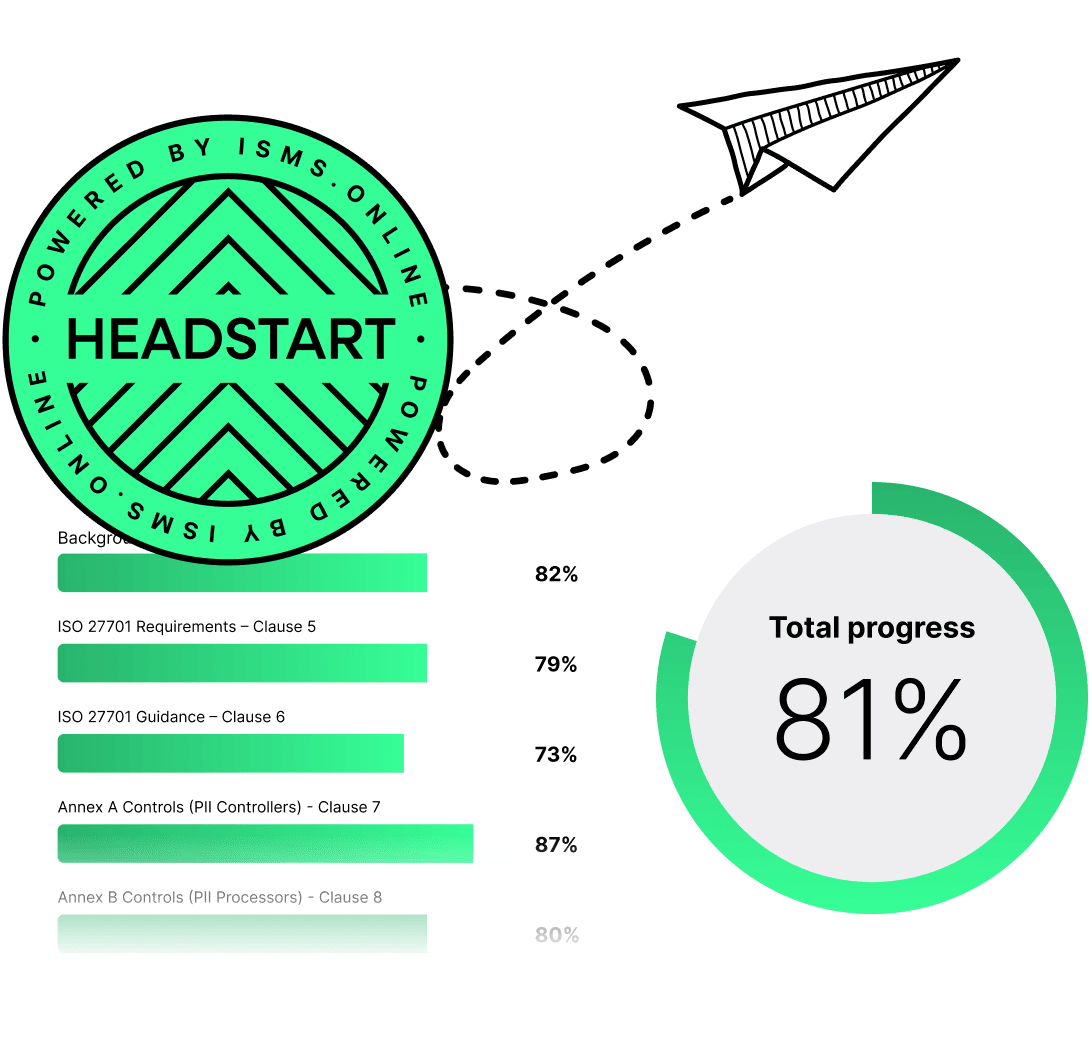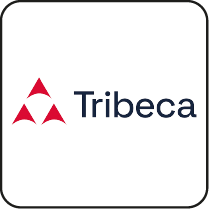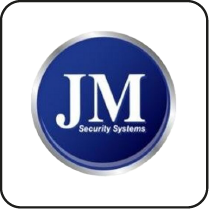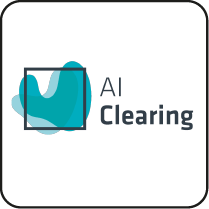Introduction to ISO 27001:2022 in Ohio
ISO 27001:2022 is an internationally recognized standard for Information Security Management Systems (ISMS), providing a structured framework for managing sensitive information. For organizations in Ohio, adopting ISO 27001:2022 is crucial to safeguarding against data breaches, complying with regulatory requirements, and building trust with clients and stakeholders. Given Ohio’s diverse industrial landscape, including healthcare, finance, and manufacturing, robust information security practices are essential.
Enhancing Information Security Management
ISO 27001:2022 enhances information security management by offering a systematic approach to identifying, assessing, and mitigating risks. It emphasizes continuous improvement, ensuring that security measures evolve to address emerging threats. The standard mandates regular risk assessments and the implementation of appropriate controls, fostering a proactive security culture. Compliance with ISO 27001:2022 also ensures organizations meet legal and regulatory requirements, reducing the likelihood of penalties and enhancing operational resilience. This aligns with ISO 27001:2022 Clause 6.1.2 on risk assessment and treatment.
Differences Between ISO 27001:2022 and Previous Versions
The primary differences between ISO 27001:2022 and its predecessors include updated controls to address new threats, enhanced flexibility to accommodate various organizational contexts, and improved integration with other ISO standards. The 2022 version places greater emphasis on leadership involvement and commitment to information security, ensuring top management is actively engaged in the ISMS. These updates make the standard more adaptable and relevant to the current cybersecurity landscape. Clause 5.1 emphasizes leadership and commitment, ensuring that information security is integrated into organizational processes.
Objectives and Benefits of Adopting ISO 27001:2022
The key objectives of adopting ISO 27001:2022 include protecting information assets, managing risks effectively, ensuring regulatory compliance, and building stakeholder confidence. The benefits are manifold:
– Enhanced Security: Robust protection against cyber threats.
– Business Continuity: Improved resilience and recovery from disruptions.
– Competitive Advantage: Differentiation in the market through demonstrated commitment to security.
– Operational Efficiency: Streamlined processes and reduced security incidents.
ISMS.online and Its Role in Facilitating ISO 27001 Compliance
ISMS.online is a comprehensive platform designed to simplify the implementation and compliance process for ISO 27001:2022. Our platform offers tools for managing risks, developing and maintaining security policies, handling incidents, and conducting audits. With features like risk management tools, policy templates, incident management workflows, and compliance tracking, ISMS.online streamlines the entire process, saving time and resources. Our expert guidance and resources ensure successful compliance, making ISMS.online suitable for organizations of all sizes and industries. This aligns with Annex A.5.1 on policies for information security and Annex A.6.1 on screening.
Our platform's dynamic risk management tools help you identify, assess, and treat risks efficiently, aligning with Clause 6.1.2. Additionally, our policy management feature ensures your security policies are up-to-date and accessible, supporting Annex A.5.1 requirements. Incident management workflows facilitate swift response to security incidents, enhancing your organisation's resilience as outlined in Clause 6.1.2. Lastly, our compliance tracking feature helps you monitor and maintain compliance with ISO 27001:2022, ensuring continuous improvement and adherence to regulatory requirements.
Book a demoUnderstanding the ISO 27001:2022 Standard
Core Components and Structure of ISO 27001:2022
ISO 27001:2022 is a comprehensive standard designed to help organisations establish, implement, maintain, and continually improve an Information Security Management System (ISMS). The standard is structured into several key components:
- Introduction: This section provides an overview of the standard’s purpose and scope, emphasising its role in managing information security risks systematically.
- Clauses 4-10: These clauses outline the core requirements for an effective ISMS:
- Clause 4: Context of the Organisation: Focuses on understanding internal and external issues, identifying interested parties and their requirements, and defining the ISMS scope.
- Clause 5: Leadership: Emphasises leadership commitment, the establishment of an information security policy, and the assignment of roles and responsibilities.
- Clause 6: Planning: Addresses the identification and management of risks and opportunities, setting information security objectives, and planning changes to the ISMS.
- Clause 7: Support: Covers resource management, competence and awareness, communication, and documented information.
- Clause 8: Operation: Involves operational planning and control, risk assessment, and treatment.
- Clause 9: Performance Evaluation: Includes monitoring, measurement, analysis, evaluation, internal audit, and management review.
- Clause 10: Improvement: Focuses on nonconformity and corrective action, and continual improvement.
- Annex A: Contains 93 controls categorised into organisational, people, physical, and technological controls, providing a comprehensive framework for managing information security risks.
Organisation of Main Clauses and Their Coverage
- Clause 4: Context of the Organisation
- Internal and External Issues: Identifying factors that can affect the ISMS.
- Interested Parties: Understanding the needs and expectations of stakeholders.
- Scope of the ISMS: Defining the boundaries and applicability of the ISMS.
- Clause 5: Leadership
- Leadership Commitment: Ensuring top management is actively involved.
- Information Security Policy: Establishing and communicating a clear policy.
- Roles and Responsibilities: Assigning and communicating roles and responsibilities.
- Clause 6: Planning
- Risk and Opportunity Management: Identifying and addressing risks and opportunities.
- Information Security Objectives: Setting measurable objectives aligned with the organisation’s goals.
- Planning Changes: Managing changes to the ISMS in a controlled manner.
- Clause 7: Support
- Resources: Providing necessary resources for the ISMS.
- Competence and Awareness: Ensuring personnel are competent and aware of their roles.
- Communication: Establishing effective communication channels.
- Documented Information: Managing ISMS documentation.
- Clause 8: Operation
- Operational Planning and Control: Implementing and controlling the processes needed to meet ISMS requirements.
- Risk Assessment and Treatment: Conducting risk assessments and implementing treatment plans.
- Clause 9: Performance Evaluation
- Monitoring and Measurement: Tracking ISMS performance.
- Internal Audit: Conducting regular internal audits.
- Management Review: Reviewing the ISMS at planned intervals.
- Clause 10: Improvement
- Nonconformity and Corrective Action: Addressing nonconformities and implementing corrective actions.
- Continual Improvement: Continuously improving the ISMS.
Integration with Other ISO Standards
ISO 27001:2022 is designed to integrate seamlessly with other ISO management system standards, thanks to the high-level structure provided by Annex SL. This integration offers several benefits:
- Streamlined Processes: By aligning with standards like ISO 9001 (Quality Management) and ISO 14001 (Environmental Management), organisations can streamline their processes, reducing duplication of efforts.
- Enhanced Efficiency: A unified approach to managing multiple standards enhances overall management system efficiency.
- Cohesive Management System: Integrating ISO 27001 with other standards creates a cohesive and comprehensive management system, ensuring all aspects of the organisation are aligned and working towards common goals.
Essential Requirements for Compliance
To achieve compliance with ISO 27001:2022, organisations must meet several essential requirements:
- Risk Management: Conducting regular risk assessments and implementing appropriate controls is crucial. The 93 controls in Annex A provide a comprehensive framework for addressing identified risks.
- Leadership Involvement: Ensuring top management is actively engaged in the ISMS is vital. Clause 5.1 emphasises leadership and commitment.
- Documentation: Maintaining comprehensive and up-to-date documentation of the ISMS is necessary. Clause 7.5 covers documented information requirements.
- Training and Awareness: Providing ongoing training and awareness programmes for employees ensures everyone understands their roles and responsibilities. Clauses 7.2 (Competence) and 7.3 (Awareness) outline these requirements.
- Continuous Improvement: Regularly reviewing and improving the ISMS to adapt to new threats and changes in the organisation is essential. Clause 10.2 focuses on continual improvement.
Our platform, ISMS.online, offers dynamic risk management tools, policy templates, incident management workflows, and compliance tracking features that align with these requirements, ensuring your organisation can efficiently manage information security risks and maintain compliance with ISO 27001:2022.

ISO 27001 made easy
An 81% Headstart from day one
We’ve done the hard work for you, giving you an 81% Headstart from the moment you log on. All you have to do is fill in the blanks.

Benefits of ISO 27001:2022 Certification in Ohio
Enhancing Information Security
ISO 27001:2022 certification significantly improves information security by providing a structured approach to managing risks. This involves implementing controls such as A.5.7 (Threat Intelligence) and A.8.8 (Management of Technical Vulnerabilities), ensuring comprehensive protection of information assets. The standard emphasizes continuous improvement, requiring regular monitoring and review of security practices to address emerging threats. Clause 10 focuses on continual improvement and corrective actions, reinforcing the commitment to maintaining robust security protocols. Our platform, ISMS.online, offers dynamic risk management tools that help you identify, assess, and treat risks efficiently, aligning with Clause 6.1.2.
Business Advantages for Ohio-Based Organizations
For organizations in Ohio, ISO 27001:2022 certification offers several business advantages. It enhances trust and credibility by demonstrating a commitment to information security, reassuring clients, partners, and stakeholders. This adherence to internationally recognized standards differentiates the organization in a competitive market. Operational efficiency is improved through streamlined processes and reduced security incidents, resulting in cost savings and enhanced productivity. Controls such as A.5.29 (Information Security During Disruption) and A.5.30 (ICT Readiness for Business Continuity) ensure robust business continuity planning, enhancing resilience and preparedness for disruptions. ISMS.online’s policy management feature ensures your security policies are up-to-date and accessible, supporting Annex A.5.1 requirements.
Impact on Regulatory Compliance and Legal Standing
ISO 27001:2022 certification aligns with various state and federal regulations, including HIPAA, GDPR, and CCPA, ensuring comprehensive compliance. This alignment reduces legal risks and prepares organizations for regulatory audits by providing documented evidence of compliance. Demonstrating adherence to stringent security standards builds confidence among regulators, investors, and customers, enhancing the organization’s legal standing. Stakeholder assurance is reinforced, demonstrating a commitment to best practices and reducing the likelihood of legal issues. Our compliance tracking feature helps you monitor and maintain compliance with ISO 27001:2022, ensuring continuous improvement and adherence to regulatory requirements.
Competitive Benefits
ISO 27001:2022 certification offers competitive benefits, including enhanced reputation and access to new markets. Many industries require ISO 27001 certification as a prerequisite for doing business, opening doors to new opportunities. Proactive risk management reduces the likelihood of security incidents, protecting the organization’s assets and reputation. Comprehensive training and awareness programs ensure employees are well-informed and vigilant about security practices, fostering a culture of security within the organization. ISMS.online’s incident management workflows facilitate swift response to security incidents, enhancing your organisation’s resilience as outlined in Clause 6.1.2.
Embracing ISO 27001:2022 certification enables Ohio-based organizations to enhance their security posture, build trust, and achieve long-term success.
Steps to Implement ISO 27001:2022
Implementing ISO 27001:2022 in Ohio requires a structured approach to ensure robust information security management. The initial steps involve understanding the standard, securing management support, defining the scope, and identifying interested parties. Familiarize yourself with ISO 27001:2022 requirements, including Clauses 4-10 and Annex A controls. Securing top management’s commitment is crucial, as it ensures the necessary resources and authority for implementation. Define the ISMS scope clearly, documenting boundaries and applicability per Clause 4.3. Identify and address the needs of stakeholders as outlined in Clause 4.2.
Conducting a Comprehensive Gap Analysis
Assess Current State:
Evaluate your existing information security measures to identify strengths and weaknesses. This assessment provides a baseline understanding of your current security posture.
Compare with ISO 27001 Requirements:
Map your current practices against the ISO 27001:2022 clauses and Annex A controls. Identify areas of non-compliance and gaps that need to be addressed.
Document Findings:
Record areas of non-compliance and opportunities for improvement in a structured format. This documentation serves as a roadmap for your implementation efforts.
Develop Action Plan:
Create a detailed action plan to address the identified gaps. Prioritise actions based on risk and impact to ensure a focused and efficient approach.
Key Phases of the Implementation Process
Phase 1: Planning
– Risk Assessment: Identify, assess, and prioritise information security risks. This step is crucial for understanding potential threats and vulnerabilities (Clause 6.1.2). Our platform’s dynamic risk management tools can assist you in this process.
– Set Objectives: Establish measurable information security objectives aligned with your organisational goals. Clear objectives guide your implementation efforts (Clause 6.2).
– Develop Policies and Procedures: Create and document information security policies and procedures. These documents provide the framework for your ISMS (Annex A.5.1). ISMS.online offers policy templates to streamline this task.
Phase 2: Implementation
– Deploy Controls: Implement the necessary controls to mitigate identified risks. This includes deploying controls such as A.5.1 (Policies for Information Security) and A.8.8 (Management of Technical Vulnerabilities).
– Training and Awareness: Conduct training sessions to ensure all employees understand their roles and responsibilities. Awareness programs foster a security-conscious culture (Clause 7.2). Our platform’s training modules can facilitate this.
– Communication: Establish effective communication channels for information security matters. Clear communication ensures everyone is informed and aligned (Clause 7.4).
Phase 3: Monitoring and Review
– Internal Audits: Conduct regular internal audits to assess the effectiveness of the ISMS. Audits help identify areas for improvement (Clause 9.2). ISMS.online’s audit management feature simplifies this process.
– Management Review: Perform periodic reviews by top management to ensure the ISMS remains effective and aligned with business objectives (Clause 9.3).
– Continuous Improvement: Implement corrective actions and improvements based on audit findings and management reviews. Continuous improvement is key to maintaining a robust ISMS (Clause 10.2).
Developing and Maintaining an Effective ISMS
Documentation:
Maintain comprehensive and up-to-date documentation of your ISMS, including policies, procedures, and records. Proper documentation ensures clarity and compliance (Clause 7.5). ISMS.online’s document management feature ensures your documentation is organised and accessible.
Resource Allocation:
Ensure adequate resources are allocated for ISMS maintenance and improvement. This includes budget, personnel, and tools necessary for effective implementation.
Performance Metrics:
Establish key performance indicators (KPIs) to measure the effectiveness of your ISMS. Regularly review and update these metrics to ensure they remain relevant.
Regular Updates:
Continuously update your ISMS to address new threats and changes. Regular updates ensure compliance with evolving regulatory requirements and maintain the relevance of your ISMS.
By following these steps, organisations in Ohio can effectively implement ISO 27001:2022, enhancing their information security posture and ensuring compliance with international standards.

Free yourself from a mountain of spreadsheets
Embed, expand and scale your compliance, without the mess. IO gives you the resilience and confidence to grow securely.

Risk Management in ISO 27001:2022
Role of Risk Management in ISO 27001:2022
Risk management is central to ISO 27001:2022, ensuring organisations systematically identify, assess, and treat information security risks. Clause 6.1.2 mandates a structured risk assessment and treatment process, integral to an effective Information Security Management System (ISMS). This approach not only protects sensitive information but also fosters continuous improvement, adapting to emerging threats.
Identifying, Assessing, and Prioritising Risks
Risk Identification:
– Asset Inventory: Catalogue all information assets to form the foundation for risk identification.
– Threats and Vulnerabilities: Identify potential threats and vulnerabilities associated with each asset, considering both internal and external factors.
– Annex A Controls: Utilise controls from Annex A to guide the identification process, ensuring a comprehensive approach.
Risk Assessment:
– Qualitative and Quantitative Methods: Employ both qualitative and quantitative methods to evaluate risks. Use a risk matrix to visualise and prioritise them, engaging stakeholders for a thorough evaluation.
– Risk Prioritisation: Define the organisation’s risk appetite and tolerance levels. Prioritise risks based on their potential impact and allocate resources to address high-priority threats.
Best Practices for Developing and Implementing Risk Treatment Plans
Risk Treatment Options:
– Avoidance: Eliminate activities that introduce unacceptable levels of risk.
– Mitigation: Implement controls to reduce risks to an acceptable level.
– Transfer: Outsource or insure against risks that cannot be entirely mitigated.
– Acceptance: Acknowledge and monitor low-priority risks that fall within the organisation’s risk tolerance.
Control Selection:
– Annex A Controls: Select appropriate controls from Annex A, tailoring them to the organisation’s specific context.
– Implementation: Develop detailed action plans, assign responsibilities, and establish timelines for implementation and review.
Monitoring and Reviewing Processes
Regular Monitoring:
– Performance Metrics: Establish KPIs to monitor the effectiveness of risk treatment measures and track security incidents.
Periodic Reviews:
– Internal Audits: Conduct regular internal audits to evaluate the ISMS and risk management processes (Clause 9.2).
– Management Reviews: Hold periodic management reviews to assess the overall effectiveness of the ISMS (Clause 9.3).
Continuous Improvement:
– Feedback Loops: Implement feedback mechanisms to capture lessons learned from incidents and audits.
– Adjustments and Updates: Regularly update risk assessments and treatment plans based on new information and changing circumstances.
– Training and Awareness: Ensure ongoing training and awareness programmes to keep staff informed about risk management practices (Clause 7.2).
Our platform, ISMS.online, offers dynamic tools that facilitate the identification, assessment, and treatment of risks, aligning with ISO 27001:2022 requirements. This comprehensive approach ensures continuous improvement, helping your organisation stay ahead of emerging threats and maintain operational resilience.
Compliance and Legal Requirements in Ohio
Specific Legal and Regulatory Requirements
In Ohio, organizations must comply with several state-specific and federal regulations to ensure robust information security. The Ohio Data Protection Act (ODPA) mandates businesses to implement reasonable security measures to protect personal information. Compliance with Ohio’s Breach Notification Law requires timely notification to affected individuals and the Attorney General in the event of a data breach. Additionally, federal regulations such as HIPAA and the Gramm-Leach-Bliley Act (GLBA) impose stringent data protection measures on healthcare and financial institutions, respectively.
Alignment of ISO 27001:2022 with State and Federal Regulations
ISO 27001:2022 provides a structured framework that aligns with these regulations through its comprehensive controls and requirements:
- Risk Management: ISO 27001:2022’s risk assessment and treatment processes (Clause 6.1.2) align with the risk-based approach required by HIPAA and GLBA.
- Data Protection Controls: Annex A controls, such as A.5.1 (Policies for Information Security) and A.8.8 (Management of Technical Vulnerabilities), support compliance with ODPA and breach notification laws.
- Incident Response: The standard’s incident management requirements (Clause 6.1.2) ensure timely and effective responses to security incidents, aligning with breach notification requirements.
- Documentation and Accountability: Emphasis on documentation (Clause 7.5) ensures organizations maintain records of compliance efforts, supporting regulatory audits and reviews.
Implications of Non-Compliance
Non-compliance with these regulations can have severe consequences:
- Legal Penalties: Organizations may face significant fines and legal penalties. For example, breaches of GDPR can result in fines up to 4% of annual global turnover or €20 million, whichever is higher.
- Reputational Damage: Data breaches and non-compliance can severely damage an organization’s reputation, leading to loss of customer trust and business opportunities.
- Operational Disruptions: Legal actions and remediation efforts can disrupt business operations, leading to financial losses and resource diversion.
Ensuring Ongoing Compliance
To ensure ongoing compliance with evolving legal standards, organizations should adopt several strategies:
- Regular Audits and Reviews: Conduct regular internal and external audits to assess compliance with ISO 27001:2022 and relevant regulations. Utilize ISMS.online’s audit management feature to streamline the audit process.
- Continuous Monitoring: Implement continuous monitoring tools to detect and respond to security incidents promptly. Use ISMS.online’s incident management workflows to ensure swift and effective incident response.
- Training and Awareness: Provide ongoing training and awareness programs to keep employees informed about regulatory requirements and compliance practices. Leverage ISMS.online’s training modules to facilitate comprehensive training initiatives.
- Policy Updates: Regularly review and update information security policies to reflect changes in legal and regulatory requirements. Use ISMS.online’s policy management feature to maintain up-to-date and accessible policies.
- Stakeholder Engagement: Engage with legal and compliance experts to stay informed about evolving regulations and best practices. Participate in industry forums and networks to share knowledge and insights on compliance challenges and solutions.
By following these strategies, organizations in Ohio can maintain compliance with evolving legal standards, protecting their information assets and ensuring operational resilience.

Manage all your compliance, all in one place
ISMS.online supports over 100 standards and regulations, giving you a single platform for all your compliance needs.

Training and Awareness Programs
Importance of Training and Awareness Programs for ISO 27001:2022 Compliance
Training and awareness programs are indispensable for ISO 27001:2022 compliance, particularly for organizations in Ohio. These programs ensure that employees understand their roles in maintaining information security, thereby reducing the risk of human error—a common cause of security breaches. Compliance with Clauses 7.2 (Competence) and 7.3 (Awareness) is mandatory, making training a critical component of the certification process.
Key Components of an Effective Training and Awareness Program
An effective training and awareness program should include several key components:
- Comprehensive Curriculum: Cover all aspects of information security, including policies, procedures, and best practices. Align the curriculum with your organization’s specific needs and regulatory requirements.
- Role-Based Training: Tailor content to specific roles within your organization to ensure relevance and effectiveness. This ensures that employees understand the specific security requirements related to their job functions.
- Interactive Elements: Incorporate quizzes, simulations, and practical exercises to engage employees and reinforce learning. This helps in retaining information and applying it in real-world scenarios.
- Regular Updates: Ensure your training content is up-to-date with the latest security threats and regulatory changes. Regularly review and update training materials to reflect new risks and compliance requirements.
- Clear Communication: Establish effective communication channels to disseminate information and updates. This ensures that all employees are informed about changes in policies and procedures.
Measuring the Effectiveness of Training Initiatives
Measuring the effectiveness of your training initiatives is crucial. Here are some strategies:
- Pre- and Post-Training Assessments: Evaluate knowledge levels before and after training sessions to measure learning outcomes. This helps in identifying areas where additional training may be needed.
- Feedback Mechanisms: Collect feedback from participants to identify areas for improvement. This ensures that the training program is continuously refined and improved.
- Incident Metrics: Monitor the number and type of security incidents before and after training to assess impact. This helps in understanding the effectiveness of the training in reducing security incidents.
- Compliance Audits: Conduct regular audits to ensure training programs meet ISO 27001:2022 requirements. This provides documented evidence of compliance for certification purposes.
- Engagement Metrics: Track participation rates and engagement levels during training sessions. This ensures that employees are actively involved in the training process.
Resources and Training Programs Available in Ohio
For organizations in Ohio, there are numerous resources and training programs available to support ISO 27001:2022 compliance:
- Local Training Providers: Organizations like The Knowledge Academy and Kelmac Group offer ISO 27001:2022 training programs in Ohio. These providers offer access to expert trainers and comprehensive training materials.
- Online Platforms: Access to online instructor-led and self-paced courses provides flexible learning options. This allows employees to complete training at their own pace and convenience.
- Industry Conferences: Participation in local and national conferences offers opportunities for networking and learning from industry experts. These events provide insights into the latest trends and best practices in information security.
- ISMS.online Training Modules: Our platform offers comprehensive training modules tailored to ISO 27001:2022 requirements. These modules provide a structured approach to training and ensure alignment with compliance requirements.
- Government Resources: Utilize resources from state and federal agencies, such as the Ohio Department of Administrative Services, for additional training and compliance support. These resources provide access to regulatory updates and best practices for information security.
By utilizing these resources, your organization can develop effective training programs, ensuring compliance with ISO 27001:2022 and enhancing your overall security posture.
Further Reading
Internal and External Audits
Purpose and Importance of Internal and External Audits in ISO 27001:2022
Internal and external audits are essential for maintaining an effective Information Security Management System (ISMS) under ISO 27001:2022. Internal audits ensure compliance with the standard, identify areas for improvement, and validate risk management processes (Clause 9.2). They prepare organizations for external audits by addressing issues proactively. External audits, conducted by independent bodies, provide certification, offering an objective assessment that enhances credibility and trust among stakeholders. Both audit types are crucial for regulatory compliance and market differentiation.
How to Prepare for an ISO 27001:2022 Audit Effectively
Effective preparation involves several key steps:
- Documentation Review: Ensure all ISMS documentation, including policies, procedures, and risk assessments, is complete and up-to-date (Clause 7.5). Our platform’s document management feature ensures your documentation is organised and accessible.
- Internal Audit Schedule: Develop a regular internal audit schedule, focusing on high-risk areas identified through a risk-based approach.
- Training and Awareness: Conduct training sessions to prepare staff for the audit process, ensuring they understand their roles and responsibilities (Clause 7.2). ISMS.online’s training modules can facilitate this.
- Mock Audits: Perform mock audits to simulate the external audit process, identifying potential issues and areas for improvement.
- Audit Checklist: Create a detailed audit checklist based on ISO 27001:2022 requirements to ensure comprehensive coverage.
Common Audit Findings and How They Can Be Addressed
Common findings include documentation gaps, incomplete control implementation, and insufficient training. Addressing these involves:
- Root Cause Analysis: Identify the root cause of non-conformities and address them at the source.
- Corrective Actions: Implement corrective actions to address identified issues, ensuring they are documented and tracked (Clause 10.1).
- Follow-Up Audits: Schedule follow-up audits to verify the effectiveness of corrective actions.
- Continuous Improvement: Use audit findings to drive continuous improvement within the ISMS (Clause 10.2). Our platform’s compliance tracking feature helps monitor and maintain compliance.
How to Maintain Audit Readiness and Ensure Continuous Compliance
Maintaining audit readiness and continuous compliance involves:
- Regular Audits: Conduct regular internal and external audits to ensure ongoing compliance.
- Continuous Monitoring: Implement continuous monitoring tools to detect and respond to security incidents promptly. ISMS.online’s incident management workflows facilitate swift responses.
- Management Reviews: Hold periodic management reviews to assess the overall effectiveness of the ISMS (Clause 9.3).
- Documentation Maintenance: Keep all ISMS documentation up-to-date and easily accessible.
- Stakeholder Engagement: Establish effective communication channels and feedback mechanisms to capture stakeholder input and drive further improvements.
By adhering to these guidelines, organisations in Ohio can ensure their ISMS remains robust, compliant, and continuously improving, leveraging ISMS.online’s comprehensive tools for streamlined audit preparation and management.
Continuous Improvement of ISMS
Significance of Continuous Improvement in ISO 27001:2022
Continuous improvement is a core aspect of ISO 27001:2022, ensuring that your Information Security Management System (ISMS) remains effective and adaptive. Clause 10.2 emphasizes the necessity for continual enhancement, requiring organizations to refine the suitability, adequacy, and effectiveness of their ISMS. This principle is crucial for maintaining resilience in a dynamic regulatory environment and evolving technological landscape. Regular updates to your ISMS mitigate new risks and bolster your security posture, ensuring your organization remains robust against emerging threats.
Establishing a Culture of Continuous Improvement
Creating a culture of continuous improvement begins with leadership commitment. Top management must prioritize security and compliance, setting a precedent for the entire organization (Clause 5.1). Engage employees at all levels by encouraging feedback and suggestions for enhancing the ISMS. Regular training sessions are essential to keep employees informed about new threats, best practices, and changes in the ISMS (Clause 7.2). Implement feedback mechanisms to capture insights from employees, stakeholders, and audits, identifying areas for improvement. By fostering an environment where continuous improvement is ingrained in the organizational culture, security practices are consistently refined and optimized.
Tools and Techniques Supporting Continuous Improvement
Several tools and techniques support the continuous improvement of your ISMS:
- Internal Audits: Conduct regular internal audits to identify non-conformities and areas for improvement, ensuring the ISMS remains effective and compliant (Clause 9.2). Our platform’s audit management feature simplifies this process.
- Management Reviews: Periodic management reviews assess the performance of the ISMS and identify opportunities for improvement (Clause 9.3).
- Risk Assessments: Ongoing risk assessments help identify new threats and vulnerabilities, updating risk treatment plans accordingly (Clause 6.1.2). ISMS.online’s dynamic risk management tools assist in this process.
- Incident Management: Utilize incident management tools to track and analyze security incidents, implementing corrective actions to prevent recurrence. Our incident management workflows facilitate swift response.
- Performance Metrics: Establish key performance indicators (KPIs) to measure the effectiveness of the ISMS and track improvements over time.
Measuring, Tracking, and Documenting Improvements
To effectively measure, track, and document improvements, consider the following strategies:
- KPIs and Metrics: Define and monitor KPIs related to information security, such as incident response times and compliance audit results. These metrics provide quantifiable data to assess the effectiveness of your ISMS.
- Continuous Monitoring: Implement continuous monitoring tools to track the performance of security controls and detect anomalies in real-time. This proactive approach helps identify issues before they escalate.
- Documentation: Maintain comprehensive records of all improvements, including audit findings, risk assessments, and corrective actions. Ensure documentation is up-to-date and easily accessible (Clause 7.5). Our document management feature ensures your documentation is organized and accessible.
- Review Cycles: Establish regular review cycles for all ISMS components, ensuring that improvements are systematically tracked and documented. Regular reviews help maintain the relevance and effectiveness of your ISMS.
- Reporting: Generate regular reports on the status of the ISMS, highlighting improvements, areas of concern, and future action plans. Share these reports with stakeholders to maintain transparency and accountability.
By following these strategies, you can ensure that your ISMS is continuously improving, aligning with ISO 27001:2022 requirements and enhancing your organization’s security posture.
Integration with Other Management Systems
How to Integrate ISO 27001:2022 with Other Management Systems (e.g., ISO 9001, ISO 14001)
Integrating ISO 27001:2022 with other management systems, such as ISO 9001 and ISO 14001, enhances organisational efficiency and compliance. This integration leverages the high-level structure (HLS) provided by Annex SL, which harmonises clauses and terminologies across ISO standards, simplifying the management of multiple systems.
To achieve seamless integration, organisations should identify and consolidate common processes like document control, internal audits, and management reviews. This approach reduces redundancy and ensures consistency, streamlining operations and minimising administrative burdens. Developing a unified risk management strategy that addresses risks pertinent to information security (ISO 27001), quality (ISO 9001), and environmental management (ISO 14001) is crucial. This holistic view enables comprehensive risk assessments and treatment plans, ensuring all potential threats are effectively mitigated (Clause 6.1.2).
Benefits of an Integrated Management System Approach
- Operational Efficiency: Streamlining processes and eliminating redundancies lead to more efficient operations, reducing administrative burdens and freeing up resources for other critical activities.
- Cost Savings: Consolidating audits, training, and documentation efforts results in significant cost savings, particularly beneficial for small to medium-sized enterprises.
- Enhanced Compliance: An integrated approach ensures cohesive and comprehensive compliance efforts, reducing the risk of non-compliance and enhancing the organisation’s ability to meet regulatory requirements.
- Improved Decision-Making: A unified management system provides a holistic view of the organisation’s performance, risks, and opportunities, enabling more informed decision-making and strategic planning.
- Consistent Objectives: Aligning the objectives of different management systems ensures that all efforts are directed towards common organisational goals, fostering a unified culture and enhancing overall performance.
How to Streamline Processes and Avoid Duplication of Efforts
- Process Mapping: Conduct a thorough process mapping exercise to identify overlapping activities and processes. Streamline these processes to eliminate duplication and ensure efficiency.
- Harmonised Procedures: Develop harmonised procedures that address the requirements of multiple management systems, ensuring that a single procedure can fulfil the needs of different standards.
- Integrated Audits: Schedule integrated audits that assess compliance with multiple management systems simultaneously, reducing audit fatigue and ensuring a comprehensive evaluation of the organisation’s performance (Clause 9.2).
- Unified Reporting: Implement a unified reporting system that consolidates data and metrics from various management systems, providing a clear and cohesive view of the organisation’s performance and compliance status.
- Continuous Improvement: Establish a continuous improvement framework that applies to all management systems, ensuring that improvements are systematically identified, implemented, and tracked across the organisation (Clause 10.2).
Challenges and How to Overcome Them
- Cultural Resistance: Employees may resist changes associated with integrating management systems. Overcome this by engaging stakeholders early, communicating the benefits, and providing adequate training and support (Clause 7.2). Our platform’s training modules can facilitate this.
- Complexity: Integrating multiple management systems can be complex and resource-intensive. Address this by adopting a phased approach, prioritising critical areas, and leveraging technology to streamline processes.
- Resource Allocation: Ensuring adequate resources for integration efforts can be challenging. Secure top management commitment and allocate dedicated resources to manage the integration process effectively (Clause 5.1).
- Maintaining Focus: Balancing the requirements of different management systems can dilute focus. Establish clear priorities and ensure that integration efforts align with the organisation’s strategic objectives.
- Documentation Overload: Managing documentation for multiple standards can be overwhelming. Utilise centralised documentation systems and ensure that documents are well-organised, accessible, and regularly updated (Clause 7.5). ISMS.online’s document management feature ensures your documentation is organised and accessible.
By following these strategies, organisations in Ohio can successfully integrate ISO 27001:2022 with other management systems, achieving operational efficiency, cost savings, and enhanced compliance.
Third-Party Risk Management
Why is Third-Party Risk Management Essential for ISO 27001:2022 Compliance?
Third-party risk management is crucial for ISO 27001:2022 compliance, particularly for organizations in Ohio. Third-party vendors and partners can introduce vulnerabilities due to their access to sensitive information. Ensuring these external entities adhere to stringent security standards is essential for maintaining your organization’s security posture. ISO 27001:2022 mandates managing these risks to align with your ISMS (Annex A.5.19, A.5.20, A.5.21).
How to Assess and Manage Risks Associated with Third-Party Vendors and Partners?
Risk Assessment:
– Due Diligence: Conduct thorough due diligence before engaging with third parties, including reviewing compliance certifications, security policies, and past performance.
– Risk Identification: Evaluate potential risks by assessing third parties’ access to sensitive information and their security controls.
– Risk Analysis: Use qualitative and quantitative methods, such as risk matrices, to prioritise these risks effectively.
Risk Management:
– Contractual Agreements: Include specific security requirements in contracts, outlining responsibilities and expectations (Annex A.5.20).
– Continuous Monitoring: Implement real-time monitoring tools to detect and respond to security incidents promptly.
– Regular Audits: Conduct regular audits to ensure ongoing compliance and drive improvements (Annex A.5.22).
Best Practices for Effective Vendor Management
Vendor Classification:
– Risk-Based Classification: Classify vendors based on their risk levels to prioritise resources effectively.
Security Training:
– Training Programmes: Provide security training for third-party vendors to ensure they understand and adhere to your security policies (Annex A.6.3).
Incident Response:
– Incident Response Plans: Develop and implement plans that include third-party vendors, ensuring they are aware of their roles during security incidents (Annex A.5.24, A.5.25, A.5.26).
Performance Monitoring:
– Key Performance Indicators (KPIs): Establish KPIs to monitor vendor performance and compliance.
Ensuring Third-Party Compliance with ISO 27001:2022 Requirements
Compliance Verification:
– Certification Checks: Verify compliance through certification checks, audits, and assessments (Annex A.5.19, A.5.20).
Security Assessments:
– Regular Assessments: Conduct regular assessments to evaluate the effectiveness of third-party controls.
Communication and Collaboration:
– Clear Communication: Establish clear communication channels with third-party vendors to address security concerns and align with your security objectives (Annex A.5.6).
Documentation and Reporting:
– Comprehensive Documentation: Maintain detailed documentation of third-party risk management activities to support audits and reviews (Annex A.5.37).
By adhering to these guidelines, organizations in Ohio can effectively manage third-party risks, ensuring compliance with ISO 27001:2022 and enhancing their overall security posture.
Book a Demo with ISMS.online
How can ISMS.online support your organization’s ISO 27001:2022 journey?
ISMS.online provides a comprehensive platform to streamline the ISO 27001:2022 implementation and compliance process. Our platform offers essential tools and resources to support your organization in achieving robust information security management. By utilizing our dynamic risk management tools, you can efficiently identify, assess, and treat risks in alignment with Clause 6.1.2. Our policy management feature ensures that your security policies are current and accessible, supporting Annex A.5.1 requirements. Additionally, our incident management workflows facilitate swift responses to security incidents, enhancing resilience as outlined in Clause 6.1.2.
What features and benefits does ISMS.online offer for ISO 27001:2022 implementation?
ISMS.online delivers a suite of features tailored to meet the specific needs of ISO 27001:2022 implementation:
- Risk Management Tools: Dynamic tools for identifying, assessing, and treating risks.
- Policy Templates: Ready-to-use templates for developing and maintaining security policies.
- Incident Management Workflows: Streamlined workflows for handling security incidents.
- Audit Management: Features to conduct and manage internal and external audits.
- Training Modules: Comprehensive training modules tailored to ISO 27001:2022 requirements.
- Compliance Tracking: Real-time tracking of compliance status and continuous improvement.
- Document Management: Organized and accessible documentation of the ISMS.
- User-Friendly Interface: Intuitive and easy-to-use platform for all users.
How to schedule and prepare for a demo with ISMS.online?
Scheduling a demo with ISMS.online is straightforward. Visit our website and fill out the demo request form or contact our support team directly. To prepare, gather information about your current ISMS, including existing policies, risk assessments, and compliance status. Prepare key questions and objectives you want to achieve from the demo session. Invite relevant stakeholders from your organization to join the demo session for comprehensive understanding and decision-making.
What to expect during the demo session and how it can help your organization?
During the demo session, you will receive a detailed overview of the ISMS.online platform and its features. The live demonstration will showcase key functionalities, including risk management, policy management, incident management, and compliance tracking. A Q&A session will provide an opportunity to ask questions and clarify any doubts about the platform. We will discuss customization options to meet your specific organizational needs and compliance requirements. Finally, we will guide you on the next steps for implementing ISO 27001:2022 using ISMS.online, including available support and resources.
By engaging with ISMS.online, your organization can efficiently manage information security risks and maintain compliance with ISO 27001:2022, enhancing your overall security posture.
Book a demo








